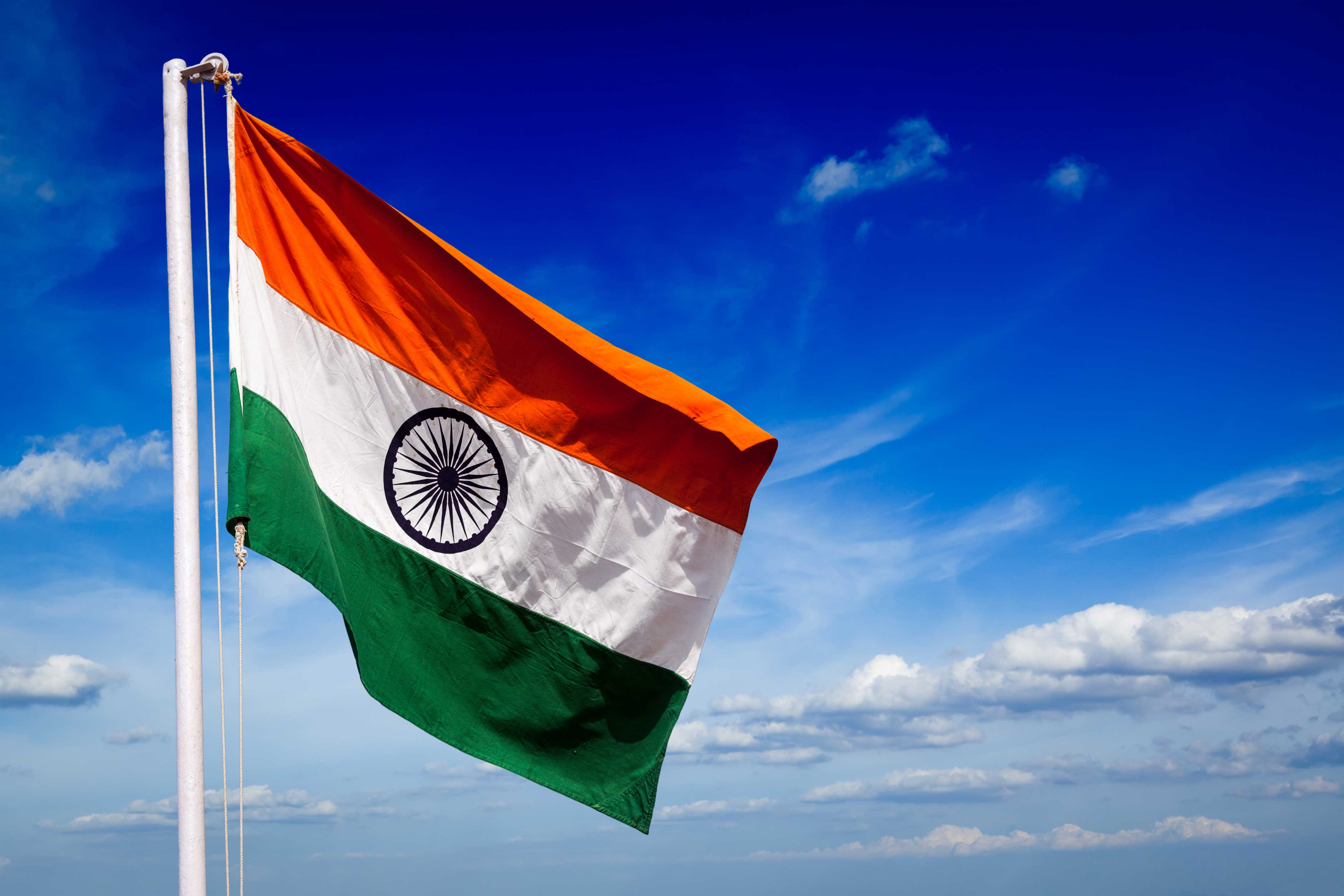The national flag of India, also known as the Tricolour, is a horizontal tricolor of deep saffron, white, and Indian green. It was adopted in its present form during a meeting of the Constituent Assembly held on 22 July 1947, and it became the official flag of the Dominion of India on 15 August 1947. The flag was subsequently retained as the national flag of the Republic of India.
The flag is based on the Swaraj flag, a flag of the Indian National Congress designed by Pingali Venkayya. The flag was subsequently modified to include a white stripe in the center to represent all the communities living in India, as well as the peace and unity that they coexist.
History of the National Flag of India
The first national flag of India was hoisted on 7 August 1906, in the Parsee Bagan Square (Green Park) in Calcutta (now Kolkata). The flag, designed by Pingali Venkayya, was a combination of three colors: red, yellow, and green. It was meant to symbolize the spiritual and political unity of all the communities living in India.
The flag was adopted by the Indian National Congress at its meeting in Calcutta in 1921. The flag was modified in 1931 to include a spinning wheel at the center, which symbolized the goal of self-reliance through the promotion of domestic industry.
The present-day national flag of India was adopted by the Constituent Assembly on 22 July 1947, just a few days before the country gained independence from British rule. The flag was modified to include a white stripe in the center to represent the communities living in India and the peace and unity they coexist in.
Design and Symbolism of the National Flag of India
The national flag of India is a horizontal tricolor of deep saffron, white, and Indian green. The saffron represents sacrifice and selflessness, the white represents peace and purity, and the green represents faith and fertility. The colors of the flag are also said to represent the three main religions of India: Hinduism, Islam, and Christianity.
The flag has a width-to-length ratio of 2:3, with the saffron stripe at the top, the white stripe in the middle, and the green stripe at the bottom. In the center of the white stripe is a blue wheel with 24 spokes, known as the Ashoka Chakra. The wheel represents the eternal wheel of law, and the spokes represent the virtues of truth, righteousness, peace, love, and non-violence.
The national flag of India is an important national symbol and is treated with great reverence and respect. It is flown on all government buildings and many private buildings on important national occasions such as Independence Day and Republic Day. The flag is also flown at half-mast as a sign of mourning on occasions of national tragedies.
Proper Display and Handling of the National Flag of India
The national flag of India is an important national symbol and should be treated with due respect and dignity. The Flag Code of India, 2002, lays down the rules and regulations for the display and handling of the national flag. Some of the important points to note are:
- The national flag should not touch the ground or water.
- The national flag should not be used as a drapery or for covering tables, lecterns, or platforms.
- The national flag should not be flown upside down, except as a signal of distress.
- The national flag should not be used for any commercial or promotional purpose.
- The national flag should not be defaced or disrespected in any way.
The national flag should be flown with the saffron stripe at the top, except on occasions when it is flown at half-mast. When the national flag is flown alongside other flags, it should be flown in a position of honor, with the saffron stripe to the left of the other flags.
The national flag should be flown at half-mast as a sign of mourning on occasions of national tragedies, such as the death of a President or a Prime Minister. The flag should be first hoisted to the top of the mast and then slowly lowered to the half-mast position. The flag should be raised again to the top of the mast after the mourning period is over.
Conclusion
The national flag of India is an important national symbol that represents the unity and diversity of the nation. It is a source of pride and inspiration for all Indians and should be treated with due respect and dignity. The Flag Code of India, 2002, lays down the rules and regulations for the display and handling of the national flag, and it is important for all citizens to follow these guidelines in order to show their respect for the national flag and the values it represents.

